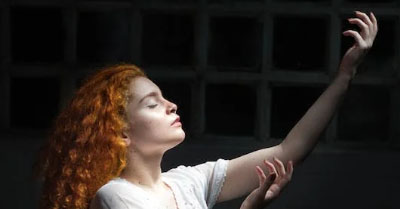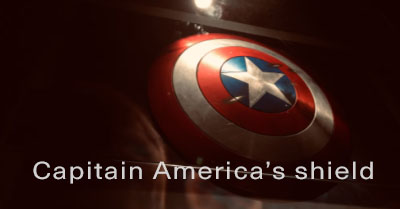Intermediate Reading Course. Section 3: Interpreting the Message
Named Figures of Speech in Reading | Page 2/2
Course Navigation
Figures of speech are so common, that they have names. In fact, there are hundreds of figures of speech.
In this portion of the lesson, we will examine a few named figures of speech common in writing and even in everyday language.

Gabriel Barreto | Pexels
What is really important here…
Interpreting Figures of Speech
In this course, knowing the names of all figures of speech is not as important as it is to recognize and interpret figures of speech when you read. If you interpret a figure of speech literally, you will not be able to understand what the writer meant to say.
Similes and Metaphors
Simile
A simile is a comparison between two things using “like” or “as.” The comparison us unusual, but it makes sense because you attach the something’s characteristic to something else or someone else.
Examples of similes
I slept like a baby.
Sleeping “like a baby” gives the idea of sleeping very well or peacefully.
After working out for a couple of years, he became as strong as an ox.
Oxen are strong animals. Being “strong as an ox” evokes the idea of being very strong.
He’s as busy as a bee.
When you think of bees in a hive, they look very busy.
When he saw the huge dog running toward him, he turned as pale as a ghost.
When you get scared, you turn pale because the blood rushes away from your face. To say someone became “as pale as a ghost” evokes the idea of turning so pale that you looked like a ghost, that is, you lost all color in your face.
Metaphor
A metaphor is also a comparison. It is just like a simile, except that it does not use “like" or “as.” In other words, a metaphor is a direct comparison.
Examples of metaphors
The new employee was the shining star in the project.
To be “a shining star” expresses the idea of someone who “shines,” that is “someone showing extraordinary skill and performance.”
His mother was his bedrock.
Literally, a bedrock is a layer of rock under a layer of soil. The bedrock is a good foundation to build houses and buildings. The figurative meaning is “someone or something that provides the foundation of your principles, which guide or support your behavior."
His brother was a shield, protecting him from the neighborhood’s bullies.
A shield is something you use for protection (like Captain America’s shield). In this metaphor, “being someone’s shield” means “being a source of protection.”

NIFTYART | Unsplash
Hyperboles and Understatements
Hyperbole
A hyperbole is an exaggeration used to emphasize a description. It is used to make a point.
Examples of hyperboles
He must have warned people a million times, but nobody paid attention to him until it was too late.
This emphasizes the idea that he warned people many times, but very likely not a million times.
I’m so hungry I could eat a horse right now.
No one can literally eat a whole horse. As a figure of speech, this means you are very hungry.
It took Congress an eternity to make a decision and vote on the legislation.
Literally, “an eternity” lasts forever. This hyperbole emphasizes that it took very long.
Understatement
An understatement is the opposite of a hyperbole. It presents someone or something as much less than it actually is. You must interpret understatements as the opposite of what is expressed literally.
Examples of understatements
Those 2-bedroom apartments are selling for nearly a million dollars each. That is a little expensive for most people.
A million dollars for a small apartment is a lot of money for most people. This understatement emphasizes the opposite, that is, “that is very expensive.”
He earned two Ph.D.s by the age of 35, one in neuroscience and the other in astrophysics. He must be kind of smart.
This is an understatement because someone must be “very smart” to earn two Ph.D.s in these fields by the age of 35.
His brain is the size of a pea
This combines a metaphor and understatement. “Having a small brain” is a metaphor for “being stupid.” Saying someone’s brain is “the size of a pea” is hyperbolic and means someone is “very stupid."
Personification
Personification is a figure of speech where you give human attributes to animals or inanimate objects.
Examples of personification
The trees were dancing slowly in the gentle tropical breeze.
Trees do not “dance,” only humans do. Used as a figure of speech, this personification evokes the idea of how the trees were moving back and forth in the gentle breeze.
That leftover pie in the fridge is calling my name.
”Calling someone’s name” is something people do, not pies. This personification evokes the idea that something has your attention. (You want to eat the pie).
As the angry storm approached, people went inside for shelter.
Anger is a human emotion, but the personification “angry storm” evokes the idea that the storm was strong and scary.
We looked at the lonely olive on the plate and wondered who would eat it.
People can be “lonely,” not olives. This personification, a “lonely olive,” evokes the idea that there was only one olive on the plate.
Many More…
There are many types of figures of speech other than the ones in this lesson. For example, when you say, “Give me a hand,” you are using synecdoche, a figure of speech in which you use the part (a hand) to mean the whole (”I need all of you”).
When you say, “The White House needs to address the problem,” you are using metonymy, a figure of speech where you use the name of a “thing” to mean something else that is related to it; “The White House” (the thing) refers to “the president of the United States and people who work in the White House.”
Litotes refers to the use of a double-negative–for example, when you say, “It wasn’t bad” to mean that something was good.
Related Video
Up Next: Analyzing the Writer’s Perspective
Go to the next lesson to learn about analyzing he writer’s perspective.